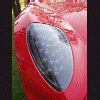IGM Supercar (Gordon Murray) (Spy)
-
Contenuti simili
-
Jeep Avenger MY 2025 1 2 3 4 162
Pubblicato da ykdg1984,
- anteprime auto
- avenger 2023
- (e 6 altri in più)
- 1610 risposte
- 362963 visite
-
- 19 risposte
- 6054 visite
-
- 11 risposte
- 4568 visite
-
-
-







.thumb.jpg.902d2a4f20a129e92b6f6920407b81bd.jpg)






.thumb.jpg.46228d717c405acd43b45b79fddce6a4.jpg)









Messaggi Raccomandati: